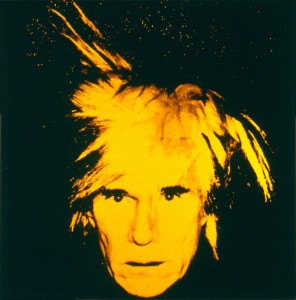In the upcoming June 20 issue of The New York Review of Books, Richard Dorment pretty well demolishes the Andy Warhol Foundation and the Warhol Art Authentication Board. It’s a long, detailed article — posted already online — and I recommend it. Here are a few key passages, which deal with the lack of independence — which was claimed — between the two bodies, and far worse, how the authentication board seemed to change its mind on certain works when it behooved the foundation.
 Some of Dorment’s reporting comes from public court documents that have heretofore been overlooked.
Some of Dorment’s reporting comes from public court documents that have heretofore been overlooked.
…In one electrifying moment during his deposition, on July 7, 2010, [Vincent] Fremont [Warhol’s former assistant] admitted that on at least one occasion he sold as authentic Warhols paintings that the estate of Andy Warhol had confiscated from the owner on the grounds that they were not the work of Andy Warhol. He also admitted that the authentication board on which he sits decided that the same body of work had been created under what one member called false pretenses. What made the sales legitimate, he said, was that the authentication board later declared the paintings to be genuine after all.
And:
…when [Rupert Jasen] Smith [one of Warhol’s offsite printers] himself died in 1989 they [44 paintings] were in the printer’s estate. In a letter dated September 25, 1991, the Warhol estate asked Smith’s executor Fred Dorfman and heir Mark Smith to hand over the forty-four paintings…The reason the estate gave for its request was that these paintings were not the work of Andy Warhol. The September 25 letter, which the foundation’s chief financial officer K.C. Maurer has said appears to be signed by Vincent Fremont, explained that “because of the similarity of the Paintings to authentic works by Andy Warhol, their releases might threaten the integrity of the art market and Andy Warhol’s reputation.†Dorfman brought the pictures, as requested, to the Warhol Estate personally. He did not receive compensation….
…After declaring in 1991 that the confiscated paintings were not the work of Andy Warhol, more than ten years passed, during which time Andy Warhol’s work became increasingly valuable. In his July 7, 2010, deposition in the suit brought by Simon-Whelan, Fremont explained what happened next. The more he looked at the works confiscated from Rupert Jasen Smith’s studio, he said, the more he came to feel that they resembled “other†(presumably real or at least authenticated) works already owned by the foundation. In his own words during his deposition: “There was less and less there that was problematic—with the exception of the signature…and some sizes of some of the work, but they became, to me, worthy of review.†By “review†he meant reexamination by the authentication board.
In due course Fremont proposed that the pictures be resubmitted for authentication….
…[eventually] some of the paintings produced by Rupert Jasen Smith without Warhol’s knowledge were, after all, deemed to be authentic works made by Andy Warhol. In Fremont’s words, the paintings turned over by Dorfman, including those with bad signatures, “went through the normal process. Some were authenticated, some weren’t.â€
The Foundation, it appears, sold some of those works — though Dorment says he knows not which or to whom.
Dorment’s tale is a tangled one, but for anyone who owns a Warhol or wants to someday own a Warhol, it is must reading. He concludes “…the coming year may prove to be the most difficult yet for the Warhol Foundation.” Andy himself might be frightened.
